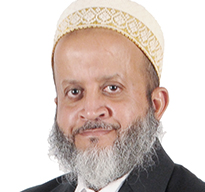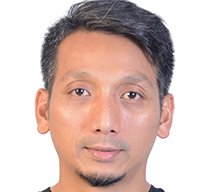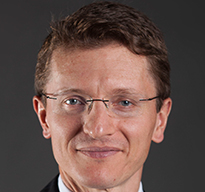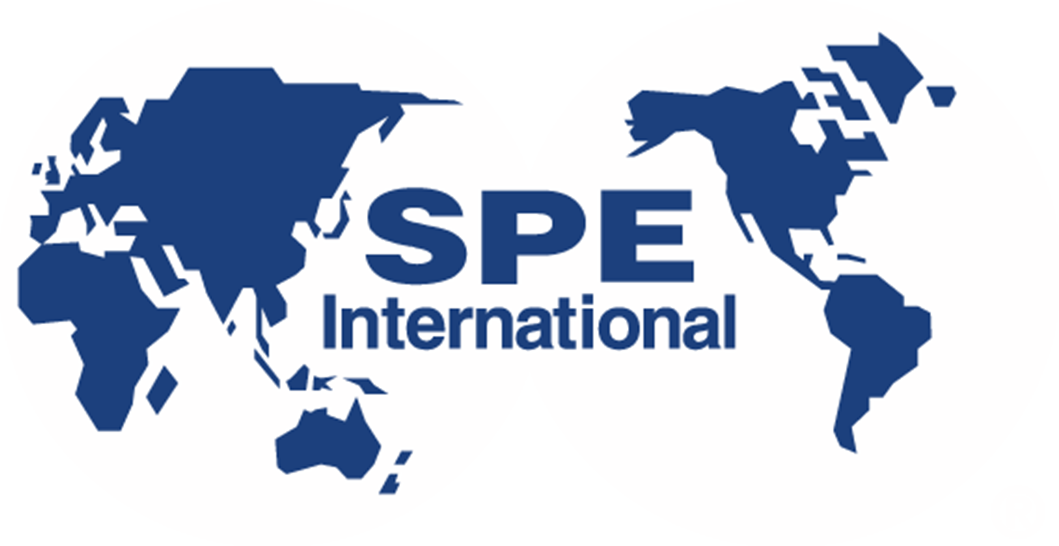Agenda
Please Note: All times are Coordinated Universal Time +8 (UTC+8)
Monday, January 24
Keynote Speaker(s):

Muhammad Andi Solihin
Vice President Drilling & Completions
PT PERTAMINA Hulu Rokan
Panelist(s):

Darius Chen
Senior Solution Leader & Associate Partner
McKinsey & Company

Anwar Husen Akbar Ali
Head Petroleum Engineering Department
PETRONAS

Erwindo Tanjung
Senior Drilling Manager
PremierOil A Harbour Energy Company

Fred Majkut
Marketing and Strategy Director, Asia Pacific
Schlumberger Asia
One of the critical success factors in the upstream business, especially as the industry transitions to supply cleaner energy, is the efficiency in how hydrocarbon is produced from reservoirs through optimally designed wells that deliver at their potential. Higher deliverability wells mean lower overall unit development and operating costs, and more cash flow to support the energy transition.
This panel session will provide a unique opportunity to gain insights from senior leaders representing Asia Pacific regulators, operators, and service companies on our collective success in achieving well performance expectation from new and existing wells. Insights include the common trends defining success and key challenges still being faced by operators in the current era. The discussion will revolve around these topics, but is not limited to:
- The impact of new technologies in driving down costs and delivering profitable projects especially in the pandemic era
- Common well and completion types in the region and emerging themes to maximise profitability in deepwater, mature, and unconventional fields
- Common challenges faced while implementing new technology applications and improving supply chain
- Support required from regulators to provide a more enabling environment
- Initiatives to improve collaboration amongst operators to utilise learnings and further improve well deliverability outcomes
The drilling and completion of wells continue to gather strong momentum within the E&P industry. As wells become deeper, longer, and more geologically complex to recover hydrocarbon assets from more challenging rock formations, the industry demands for fit-for-purpose completion technology to improve operational efficiency, maximise production, and project economics. Well completions technology continues to evolve at a rapid pace to address various challenges, such as:
- Controlling unwanted production fluid (such as gas/water in oil producers with ICD/AICD)
- Active reservoir management and real-time surveillance with intelligent completions
- Maximised reservoir exposure and improved hydrocarbon recovery with proven multilateral technologies
- Optimise operational efficiency with single trip system in conventional and sand control completions
- Artificial lift equipment design/upgrade for conventional and unconventional wells
In essence, completions technology has evolved, where installations are done in less time and reliably produced at greater rates. This session will cover case studies and best practices to clearly demonstrate how new technologies achieved those goals to enhance wells deliverability throughout its life cycle.
Discussion Leaders:
- Tipping the Balance in Favour of Energy Efficient, Optimised Completion Solutions, Bruce Robertson, Weatherford
- Extending Well Production Life with Retrofit Multilateral Solutions, Justin Roberts and Ben Butler, Halliburton
- Using Remotely Operated Barrier Valve Technology in Deepwater Subsea Wells to Improve Completion Efficiency, John Walker, Halliburton, Asaf Nadeem, Tullow Oil
- Autonomous Inflow Control Device (AICD) Application Journey in Malaysia, Siti Rodhiah Fazilah, PETRONAS
- [ePoster] Reservoir Monitoring and Control using Permanent DTS and PDG in a Mature Field, Sanggeetha Kalidas, Schlumberger
- [ePoster] A New Insights into Fishbone Well Deliverability Analysis, Case Study: Solution Gas-Drive Reservoir in Algeria, Habib Ouadi, University of North Dakota
Tuesday, January 25
Optimising well intervention approaches has been a significant subject of discussion for both operators and service companies in recent years, taking into consideration the current pandemic which has created more demanding operational environment. Production sustainability remains crutial as operators continue to balance well intervention and engineering approaches with stringent well economic constraints. The industry has been giving more specific attention to the continuous evolution of smart intervention techniques, to efficiently deliver production with creative intervention approaches. These approaches include re-inventing the current well intervention techniques for higher operation efficiency, out-of-the-box intervention methodologies with current or additional resources, real-time data transmission and analysis, and remote downhole tools manipulation, equipment, and service automation.
This session will provide an overview of the latest development in efficient well intervention approaches, to either extend the current well intervention envelope or provide significant well economic gains for operators. Presentations will include case histories with actual field implementation and quantifiable results.
Discussion Leaders:
- Real-Time Rig Less Intervention with Catenary Coiled Tubing System to Perforate Long Horizontal Section of a Well in Brunei Offshore, Azemi Leong, Halliburton
- Nano-Based Pre-Flush System for an Extended Scale Inhibitor Squeeze Lifetime, Suzalina Zainal, PETRONAS Research Sdn Bhd
- Fibre Optic Assisted Well Interventions. Enablers of Optimisation through Subsurface Insights, Sebastian Kroczka, Halliburton
Various problems can occur in a producing well that can negatively affect operations, production, and ultimately revenue generated; these may include the failure of mechanical equipment, changes in production characteristics, and plugging and increases in injection pressure. Often, a well intervention approach is required to achieve optimal production should any of these issues happen during production.
Well interventions are frequently required to repair or replace damaged completion components to restore well integrity, improve inflow performance to reduce skin, and/or to improve tubing performance by removing impediments to flow or installing artificial lift. Interventions can be a cost-effective way of slowing or even reversing a decline in well performance. The efforts to mitigate production decline and, in some cases, reverse the trend, requires not only a deeper understanding of the subsurface issues but also a comprehensive well intervention plan to sustain production.
This session will provide well intervention learnings and best practices from subject matter experts for a sustainable production lifecycle.
Discussion Leaders:
-
Innovative Real Time Coiled Tubing Interventions - Acid Descaling, Logging, Water Zone Isolation & Perforation, Syed Muhammad Danish and Faraz Ahmed, Halliburton Energy Services Group
-
Underbalanced Perforating with 800-ft Guns Completed in Single Trip with Fiber-Optic-Enabled Coiled Tubing: A Case Study from Jambaran Field, East Java, Indonesia, John Jenie, Schlumberger
-
Utilisation of Direct Current (DC) to Enhance Oil Production in Shallow Carbonate Reservoir, A. Fajrin K. Wijaya, PT Pertamina EP
-
[ePoster] Sand Consolidation Technology as Alternative Sand Control Method, Proven Durability and Sustainability in Long Run, Saharul Hashim, Halliburton
-
[ePoster] Using Velocity Valve as Alternative for Normal Storm Choke for Well with Recurrence SSCSSV Failure Due to High Sand Erosion, Nik Mohd Qusyairi Mohd Zulkifli, PETRONAS Carigali Sdn Bhd
-
[ePoster] Redefining Well Barrier via Alternative Technology to Secure High Production Wells with Annulus Pressure, Nik Mohd Qusyairi Mohd Zulkifli, PETRONAS Carigali Sdn Bhd
Wednesday, January 26
Recent years have seen significant advances in data analytics, machine learning (ML) and artificial intelligence (AI). The oil and gas industry is progressively adopting these novel solutions and applying them in various disciplines and thus far, the adoption of these digital tools has unlocked significant value. This session will showcase how operators and various industry players are leveraging data analytics and machine learning to increase well deliverability, sustain production, and reduce operational cost.
Discussion Leaders:
-
Digitalisation through Subsurface Insights, Sebastian Kroczka, Halliburton
-
IoT Full Scale Implementation Strategy using Public-Private GSM Tunneling Network for ESP & SRP Wells Optimisation: A Brownfield Case Study, Ghalib Ramadhan, Weatherford
-
Digital-Driven Proactive Surveillance through Integrated Asset Modelling (IAM): An Experience from Peninsular Malaysia Asset, Karim Ahmed Shata, PETRONAS Carigali Sdn Bhd
-
Protecting The Base with Additional Production Enhancement (PE) P* Candidates and Improvement of Well by Well Review Powered by AI/ML and Automation, Sulaiman Sidek, PETRONAS Carigali Sdn Bhd
-
[ePoster] Physics-Based Features Creation to Improve Machine Learning Models Performance for Oil Production Rate Prediction, Eghbal Motaei, PETRONAS
-
[ePoster] Analytics Tool for Subsurface Corrosion, Damage Assessment – How Machine Learning and Data Science Approach to NPT & Cost Reduction, Fatemeh Mehran Didanloo, Halliburton
-
[ePoster] Dynamic Well Operating Envelop, M Irsyaduddin Rozali, PETRONAS
-
[ePoster] Unlocking Hidden Field Potential by Increasing Recovery through TDR Analysis of Pipeline using Integrated GAP Transient Modelling, Sarran Raaj Kunasekaran, PETRONAS Carigali Sdn Bhd
The oil and gas industry have and will continue to face various challenges, especially in recent years where volatility, uncertainty, complexity, and ambiguity (VUCA) have become the new norm that must be faced daily.
The world's paradigm shift towards clean energy is also placing increased operational constraints on upstream players. These challenges have forced upstream players to re-look into the current business model and explore the most appropriate and integrated business models to continue to remain sustainable. One key area of advancement is in integrated asset modelling, and its application to drive integrated workflow and decisions to rejuvenate production.
Technology holds an important key in supporting the upstream sector in their business models to manage portfolio assets, ranging from green fields, brown fields, and even rejuvenating existing fields to optimise their potential value. In addition, collaboration from all stakeholders is crucial for this process to be a success, and deliver better returns on investment and expectations. This session will showcase various techniques and workflows for production rejuvenation.
Discussion Leaders:
-
Production Optimization Scenarios with GAP Network Model to Strike a Balance between New and Existing Oil, Timur Tashkenbaev, PETRONAS
-
Maximise Operation Efficiency in Production Enhancement through Integrated Business Model, Lee Chee Chung, Dowell Schlumberger (M) Sdn Bhd.
-
Rejuvenating Mature Field Production Opportunities with Integrated Production Monitoring and Optimisation Solutions, Sanggum Sanjaya, Halliburton
-
[ePoster] A Comprehensive Well Integrity Management Solution for Giant Field in Middle East, Fatemeh Mehran Didanloo, Halliburton
-
[ePoster] Overcoming Challenges in a Multi-Rig Turnkey Development Drilling Project Resulting in Top Level Performance, Abdulqawi Al-Fakih, Schlumberger
-
[ePoster] Breaking Paradigms By Performing The First Smart Well Recompletion With Hydraulic Work Over Unit On The Highest Production Platform, Case History From Brunei, Rakesh Palappetta, Halliburton
-
[ePoster] An Integrated Simplified Representative Elementary Volume (SREV) and Integrated Asset Model (IAM) Approach to Sand Prediction and Control Monitoring (SPCM) using Web-Based Interfaces to Reference with Operation Efficiency Improvement in Zawtika Field, Myanmar, Chaiyaphruk Chaiyasart, Shuping Chang, Halliburton
